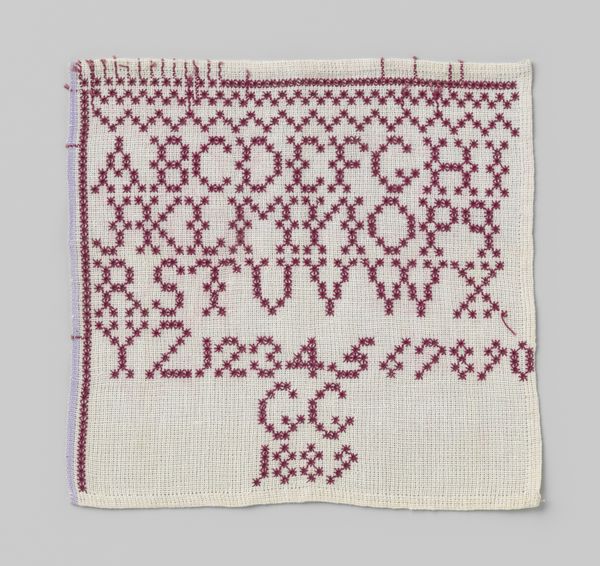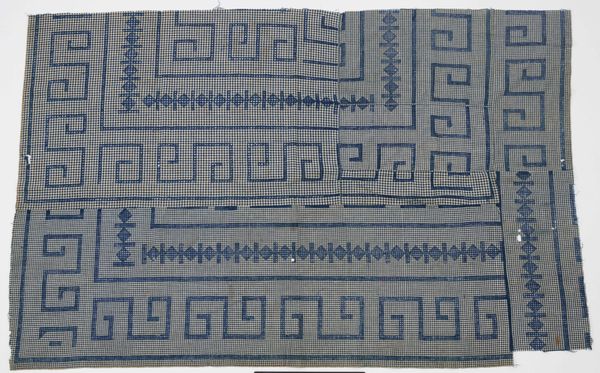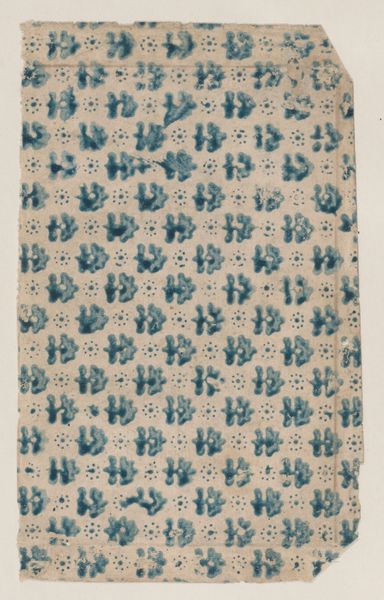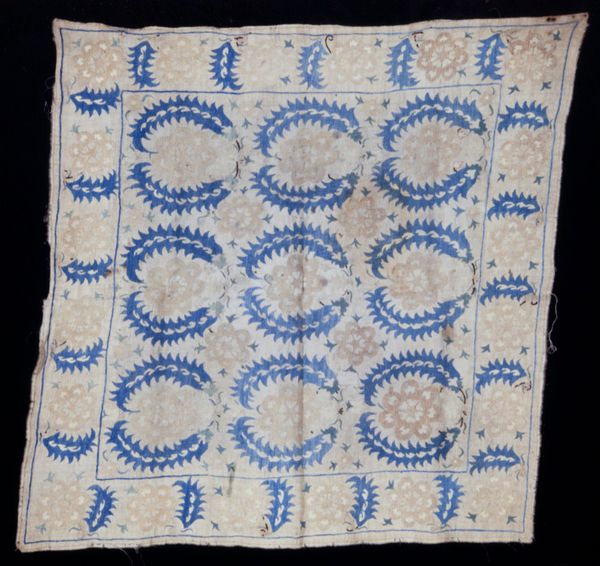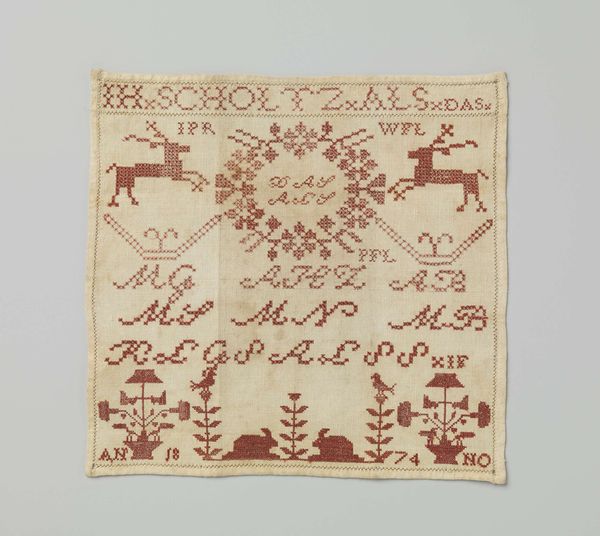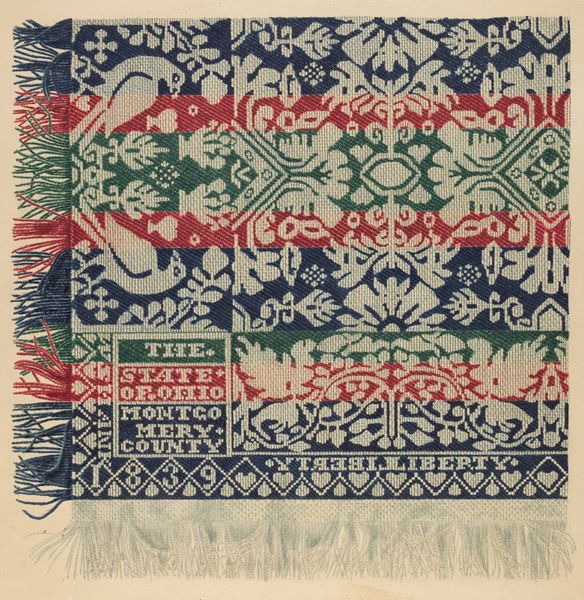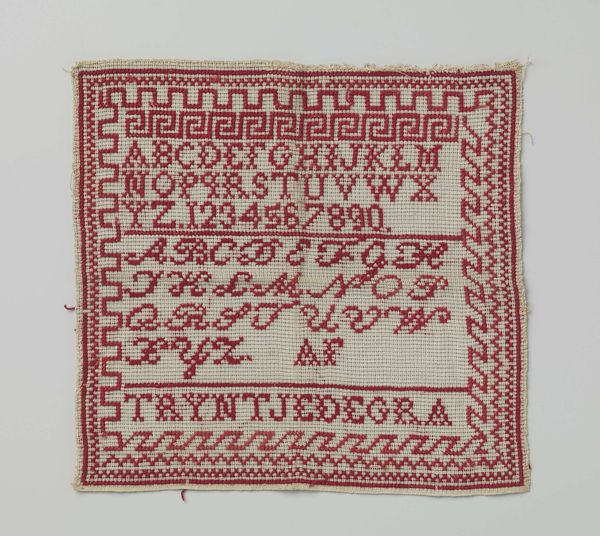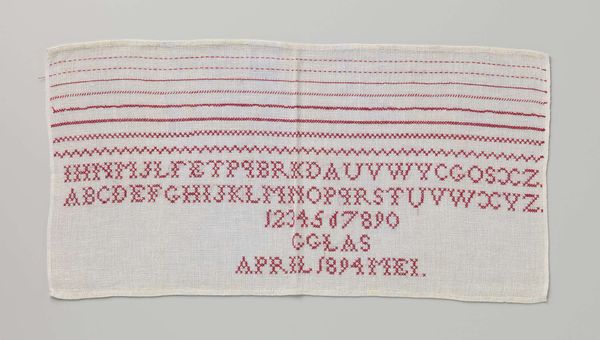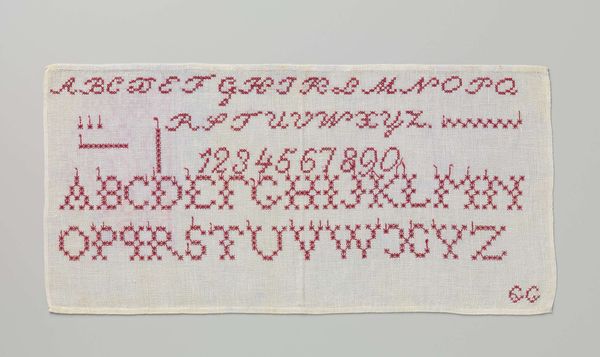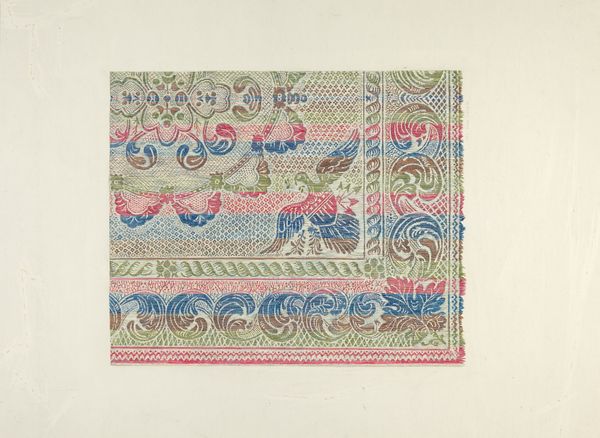
drawing, fibre-art, weaving, textile
#
drawing
#
fibre-art
#
dutch-golden-age
#
weaving
#
textile
Dimensions: length 26.5 cm, width 31.0 cm
Copyright: Rijks Museum: Open Domain
Editor: Here we have "Sampler of Multicolored Cotton on Cotton" made in 1920 by W.H.J.L. Hoogland. It looks like a cross-stitched sampler. It feels so simple and almost…domestic. What story does this piece tell to you? Curator: For me, this sampler speaks volumes about the relationship between craft, education, and social expectations. The materials – simple cotton thread and fabric – were readily available and inexpensive, reflecting their widespread use in domestic settings. This isn't high art destined for a gallery, it’s everyday making. Editor: I see what you mean. It’s not something we’d typically consider fine art. Curator: Exactly. The act of stitching, a repetitive and time-consuming process, points to the labour involved and the gendered expectations placed on women in the early 20th century. This wasn't just about artistic expression; it was about acquiring skills deemed essential for domestic life and preparing girls for their expected roles. Notice the lettering: "Comeniusschool Amsterdam 1920”. Editor: Yes! So, this was created in a school setting… it’s educational! Curator: Precisely. It’s a record of labour, education, and societal roles all interwoven in the textile itself. We also see the connection to production of not only skill, but this creation of uniform standard of knowledge for Amsterdam, which reinforces societal constructs. Editor: So, by looking at the materials and how it was made, we gain a whole new perspective on the culture that produced it! Curator: Precisely! By engaging with this artwork using a materialist approach, we avoid an analysis only of aesthetics to examine societal underpinnings of education and production. Editor: I never would have thought of a simple sampler holding so much information about labor and education!
Comments
No comments
Be the first to comment and join the conversation on the ultimate creative platform.
